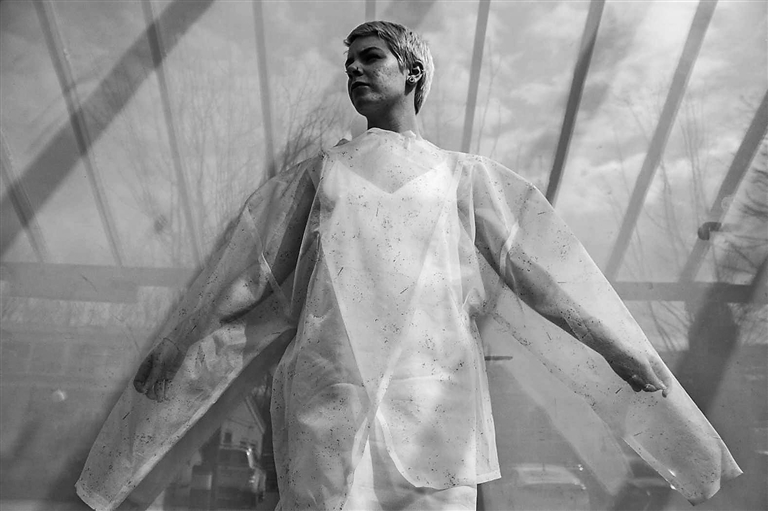
CANADIAN-IRANIAN designer Roya Aghighi hopes we can develop a more intimate relationship with fashion by treating clothes as living beings that need our help to survive. Working with a group of scientists at the University of British Columbia (UBC), Aghighi has invented a living, biodegradable fabric named biogarmentry. Made from algae, the biofabricated textile photosynthesizes, which purifies the air around it. UBC claims it’s the first living and photosynthesizing textile, and has fashioned the material into a sheer, cloak-like garment. While prototypes like these are still in the early stages of research and design, and far from mass production, they challenge the fashion industry to reimagine ways it can reduce its colossal carbon footprint through alternative fabrics. Fashion is one of the world’s most polluting industries. It’s responsible for more carbon emissions than international flights and shipping combined, amounting to 10 percent of all greenhouse gasses emitted globally, according to figures from the United Nations Environment Program (UNEP). While Aghighi’s innovative garment is only at the proof-of-concept stage, buyers may one day be instructed to stretch the fabric out in front of a window before putting it on. With sunlight and a spray of water, its single-cell chlamydomonas reinhardtii algae come to life. Aghighi predicts consumption habits will take a long time to change. “It is going to be a slow shift,” she said. “But I hope that it’s gonna be a long-lasting one.” In recent years, environmental startups have proposed a number of alternative natural fibers, from beechwood made into cashmere-like beachwear to cactus leather. Many of these have the potential to sequester carbon but none have been shown to achieve net-zero emissions over the lifecycle of a garment, especially when washing and drying clothes significantly add to their overall footprint. Instead, so-called “carbon-negative” brands resort to carbon offsetting — planting trees to bring their net emissions down. In New York-based designer Charlotte McCurdy’s research, she has created a carbon-negative raincoat made from a plastic-like material made of marine algae and other biodegradable components. Like cotton or hemp, algae sequesters carbon as it grows, photosynthesizing to capture carbon dioxide from the air. Microalgae can capture 10 times as much sunlight as terrestrial plants, and it grows fast — with some species able to double their biomass within a few hours. It can be converted into powder, before being spun into a fiber. “The point is not to make a plastic out of algae,” McCurdy said. “The point is to sequester carbon, and it matters how we do that and how those systems scale.” Sustainably scaling up algae-based fabric production will be essential if these garments are to become the basis for carbon-negative fashion. Algal biotechnology is a big business. Beyond the world of fashion, it’s seen as an alternative for polyurethane plastics — the world’s most common plastic, which is used in everything from bags to outdoor furniture — as well as in fabrics. Stephen Mayfield, a biological sciences professor at UC San Diego who has made a biodegradable flip flop, says algae-based materials are, currently, where electric vehicle technologies were a decade ago. Biotech start-ups around the world are racing to scale up these fabrics, from concepts to mass-production processes that can compete with cotton or synthetic materials on price. In the lab, Aghighi’s fabric develops different patterns — organic shapes, spots and bands — as the algae grow, the designer said. When the resulting garments are commercially available, she imagines people tending to their own organic cloak, spraying their organism as they commute to work and encouraging their algae to purify the air and grow distinctive, individual motifs.(SD-Agencies) | 
